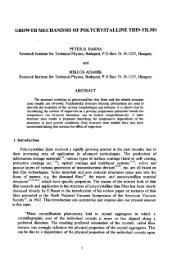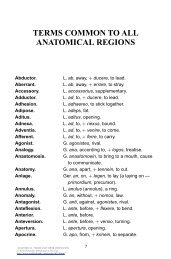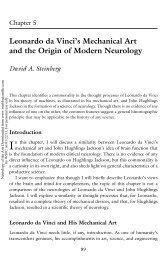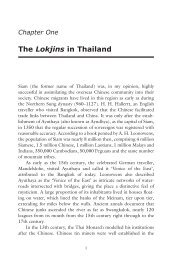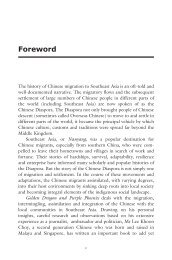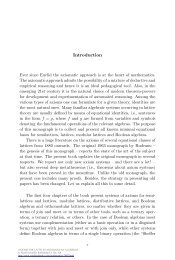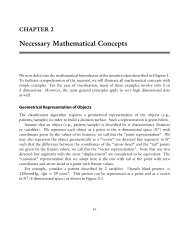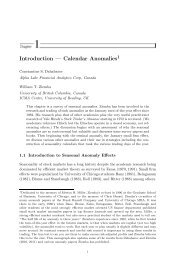Metagenome Analysis Using Megan - Asian Scientist Magazine
Metagenome Analysis Using Megan - Asian Scientist Magazine
Metagenome Analysis Using Megan - Asian Scientist Magazine
You also want an ePaper? Increase the reach of your titles
YUMPU automatically turns print PDFs into web optimized ePapers that Google loves.
14Figure 7. (a) MEGAN provides a Find tool to search for specific taxa of interest. (b) The result of a search ishighlighted in a detailed summary of the analysis. (c) MEGAN provides an Inspector tool to view the individualsequence comparisons upon which the assignment of a particular read to a particular taxon is based.program allows the user to explore the results both at a high level, and also a very detailedlevel, by providing methods for collapsing and expanding different parts of T. Each nodein T represents a taxon t and can be queried to determine which reads have been assigneddirectly to t, and how many have been assigned to taxa below t. Additionally, the programallows the user to view the Blast alignments upon which a specific assignments is based(see Figure 7(3)).4. Assignment of reads to taxaMEGAN currently uses a simple combinatorial algorithm, which we call “LCAassignment”,in association with a number of different thresholds, to assign each read to ataxon at some level of the NCBI taxonomy.The LCA-assignment algorithm operates as follows. Consider a read r and assumethat the Blast computation has established matches to sequences representing a set of taxat(r) = {tl, t2, . .. , tk}. We assign the read r to the lowest common ancestor (LCA) oft(r) in the NCBI taxonomy. For example, if r matches Campylobacter lari, Helicobacterhepaticus and Wolinella, then r is assigned to the taxon Campylobacterales. If r does notmatch any sequence in the given reference database, that is, if t(r) = 8, then r is assignedto the special taxon no hits. If r cannot be assigned to a taxon for other reasons, e.g. theread only matches sequences for which the taxon is unknown, then r is assigned to anotherspecial taxon Not assigned.In this way, each read r in the dataset is assigned to one or more NCBI taxa, or to oneof either special taxa. If the Blast matches computed for r involve only one or a few closelyrelated species, then r will be assigned to a taxon near the tips of the taxonomy. If, on theother hand, r matches a wider range of taxa, then r will be assigned to a higher-level taxon.The read may even be assigned to the root of the taxonomy, if the sequence is completelyunspecific.To implement the LCA-assignment algorithm, we assign a binary address a(t) to eachevery t in such away that if taxon s is an ancestor of taxon t, then the address a(.) is aprefix of the address a(t). <strong>Using</strong> this scheme, we can easily determine the lowest common



